7 Stretches to Fight the Effects of Your Desk
I’ve always felt a strong impulse to move. As a kid, it was in action daily, and from a young age, it manifested in my interest in competitive dance. Growing up, attending ballet class was an extremely regimented practice. I warmed up with a sequence of exercises each day—a methodical way to feel secure in my own skin. Basic positions progressively build upon each other to send you safely across the floor through a full range of motion. And movement without fear of injury leads to greater physical potential.
Our bodies are made to be in motion. Living an active life is an innate urge that can be traced back to the human genome. As I grow older, I still feel this intrinsic call to get moving. But like many adults who felt free to move and play as children and adolescents, I often tune out this internal urge to bend, stretch, and move throughout the day. And external stressors like poor sleep, hours of staring at a screen, and chronic stress only compound my unhealthy choices.
Working from home has made me more mindful of my body throughout the day. Habits like settling in awkward positions, hunching over to engage with technology, and avoiding breaks have begun to morph into small discomforts. And my makeshift workstation only makes matters worse.
We know many of the most common chronic illnesses and conditions are tied to inactivity. Sedentary behavior can have a huge impact on your health. Moving often throughout your day—whether at home or in the office—by adding regular stretches for mobility can help to offset the harmful effects of sitting.
What Happens When We Sit?
Sitting is a modern disaster for a healthy range of motion. Whether we’re tethered to a chair for six to eight hours of our workday or have a sedentary lifestyle, we can become numb to chronic tensions in the body. If you don’t use it, you tend to lose it over time. And it’s definitely true when it comes to your mobility.
Sitting for long periods can lead to trouble, simply because our chairs support our bodyweight. Our hip, ankle, and knee joints begin to stiffen, muscles weaken over time, and if we slouch, we shift the weight of our shoulders and rib cage onto the abdominal diaphragm.
Working in front of a computer brings another issue—forward head posture. When we bend our head forward, this causes pressure on the cervical spine. With time, this can lead to discomfort, imbalances, and eventually degeneration. Many of us first notice poor posture and our muscles getting shorter and tighter—signals we often ignore.
Take a Stretch Break
Every body is different. Only you and a practitioner or coach can help you discover where your postural blind spots may be. But if you’re confined to your desk and want to counteract the effects of sitting all day, try adding these seven stretches to your daily routine. Each is designed to get your muscles, joints, and tendons moving, and enhance your kinesthetic awareness.
Hips Don’t Lie
Tight hip flexors plague most people who spend copious hours in a chair. Bound to a screen at home or in the office, we can all use a hip flexor release. There are 27 muscles that cross the ball and socket hip joint. And as one of the tightest muscle areas in your body, performing these exercises may be uncomfortable at first. Keep practicing to gently and slowly surrender the grip of long hours at your desk.
1. Kneeling Lunge
From a kneeling position, place your front foot flat on the floor with your back knee resting on the ground. Keep your chest tall and your hips square as you lean forward. Ease into the stretch until your front shin and foot form a 90-degree angle and hold. To deepen the stretch, you can lift the back knee off the ground.
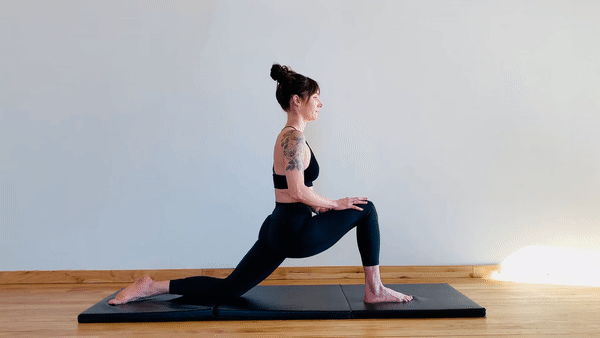
Your piriformis muscle runs diagonally from the lower spine to the surface of the femur. Deep within your buttock, it helps your hip rotate. It is also a major cause of tightness in this hip area.
2. Pigeon Stretch
To perform pigeon pose, start with your front knee bent to as close to a 90-degree angle as your body allows. If this is uncomfortable, allow your front foot to inch closer to the groin. The back knee can bend or extend as is comfortable. Rotate the back hip toward your front heel, keeping the chest tall. Gradually straighten the back leg into full pigeon pose.
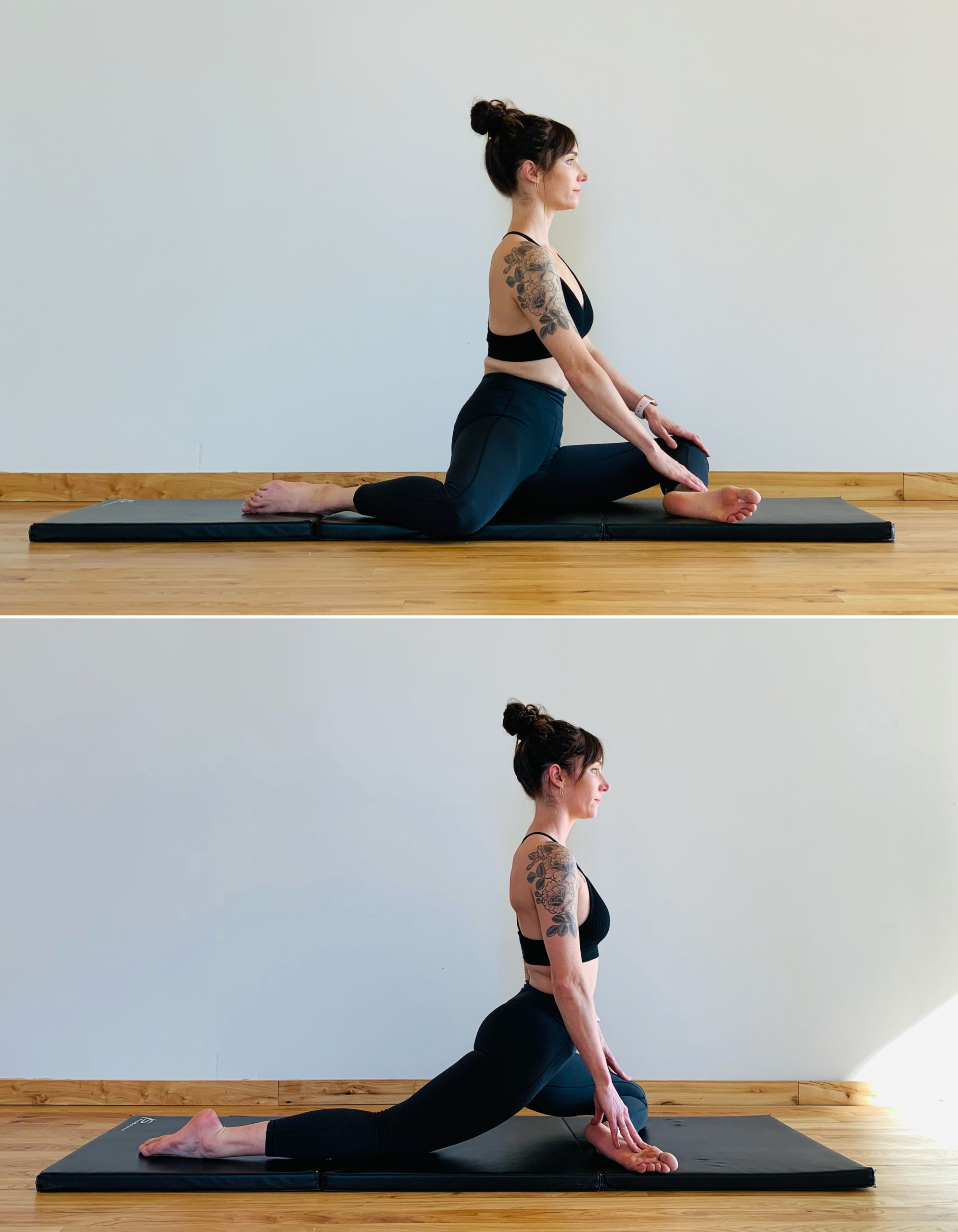
Squatting is a primal movement pattern mostly ignored in the western world. The benefits of reclaiming this position work wonders to restore functionality to the glutes and hips by elongating and strengthening.
3. Deep Squat
Start with your legs shoulder-width apart. Keeping your heels on the floor with a neutral spine, lean back as though you’re sitting into a chair. Resist pushing your knees forward over your toes.

Reverse Spinal Flexion
Slumping forward with your spine in the shape of a “C” can result in neck and back pain. Reverse your chronically curved spine by bending backward. Strengthen your glutes and lower back, stretch your hip flexors, and begin to open the chest and shoulders.
4. Low Cobra or Up Dog
Lie face down with the tops of your feet against the ground. Press your forearms into the floor, pulling your back as you raise your head up and back. If you feel comfortable here, move into full upward-facing dog—press your palms into the floor, straighten your arms keeping your shoulders in line with your wrists, lift your torso, and raise your legs a few inches off the floor.
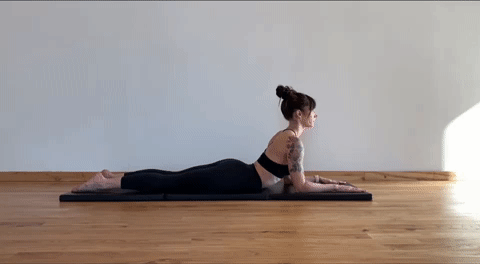
By bending the spine in an unfamiliar direction, you can help to realign the vertebrae, support the muscles that stabilize the spine, and improve your posture.
5. Bridge
Bend your knees with your legs parallel and your feet flat on the floor about hip-width apart. Extend your arms along your sides, tuck your chin, and press your feet into the floor as you send your hips up to the ceiling. If you have difficulty supporting your pelvis after lifting from the floor, use a block or bolster to support your weight. Avoid this pose if you have any neck discomfort.
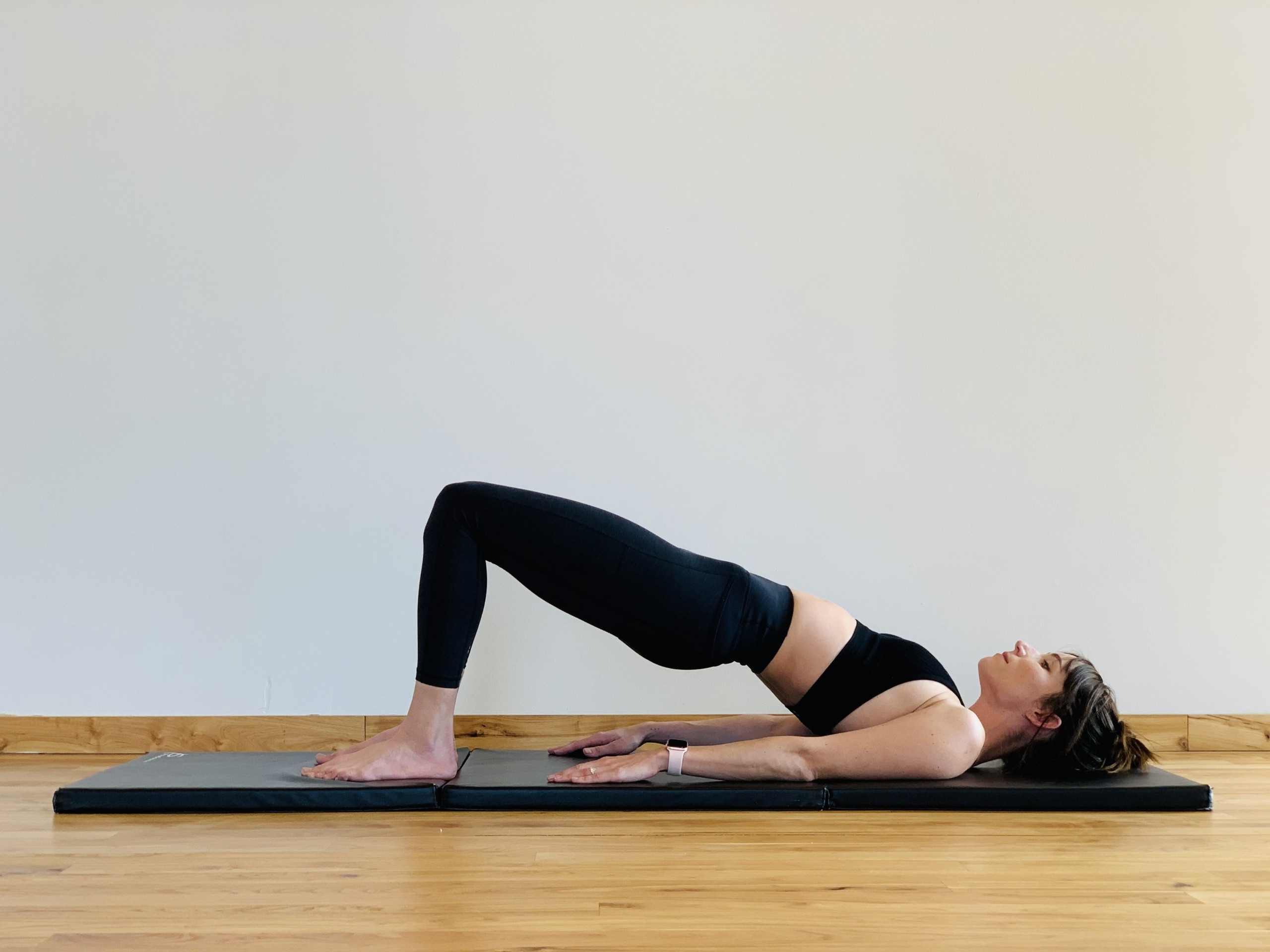
Shoulders Wide Open
Our pec and neck muscles tighten when we hunch forward for long hours. Extending the thoracic spine (upper back) and opening the chest and shoulders helps to mitigate the constant collapse inward.
6. Shoulder Opener
Standing straight and tall, hold two ends of a strap or bar in each hand behind your back. Raise your arms behind you as high as they can go without discomfort. Pull your shoulders back and together as you lift the strap toward the ceiling.
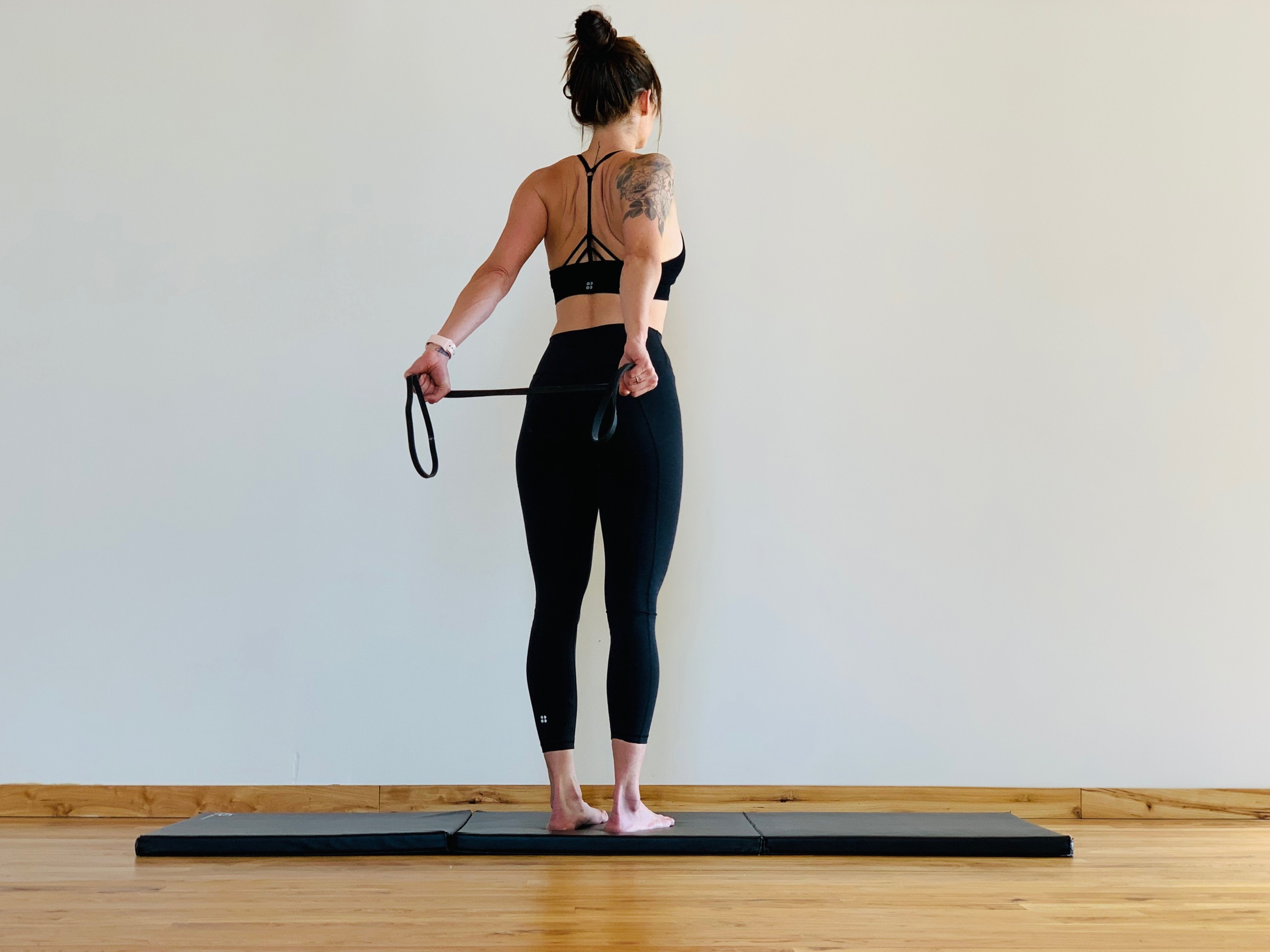
I like to end with a passive stretch to help correct poor posture by allowing the hips and chest to continue gently opening up. Relax into this one—it feels divine after a stressful day.
7. Corpse with a Bolster
From a seated position, form a diamond with your legs, with your feet together and lie back onto a bolster or foam roller with your arms draped to your side. Relax here until your hunched posture melts away—two or three minutes does the trick for me.
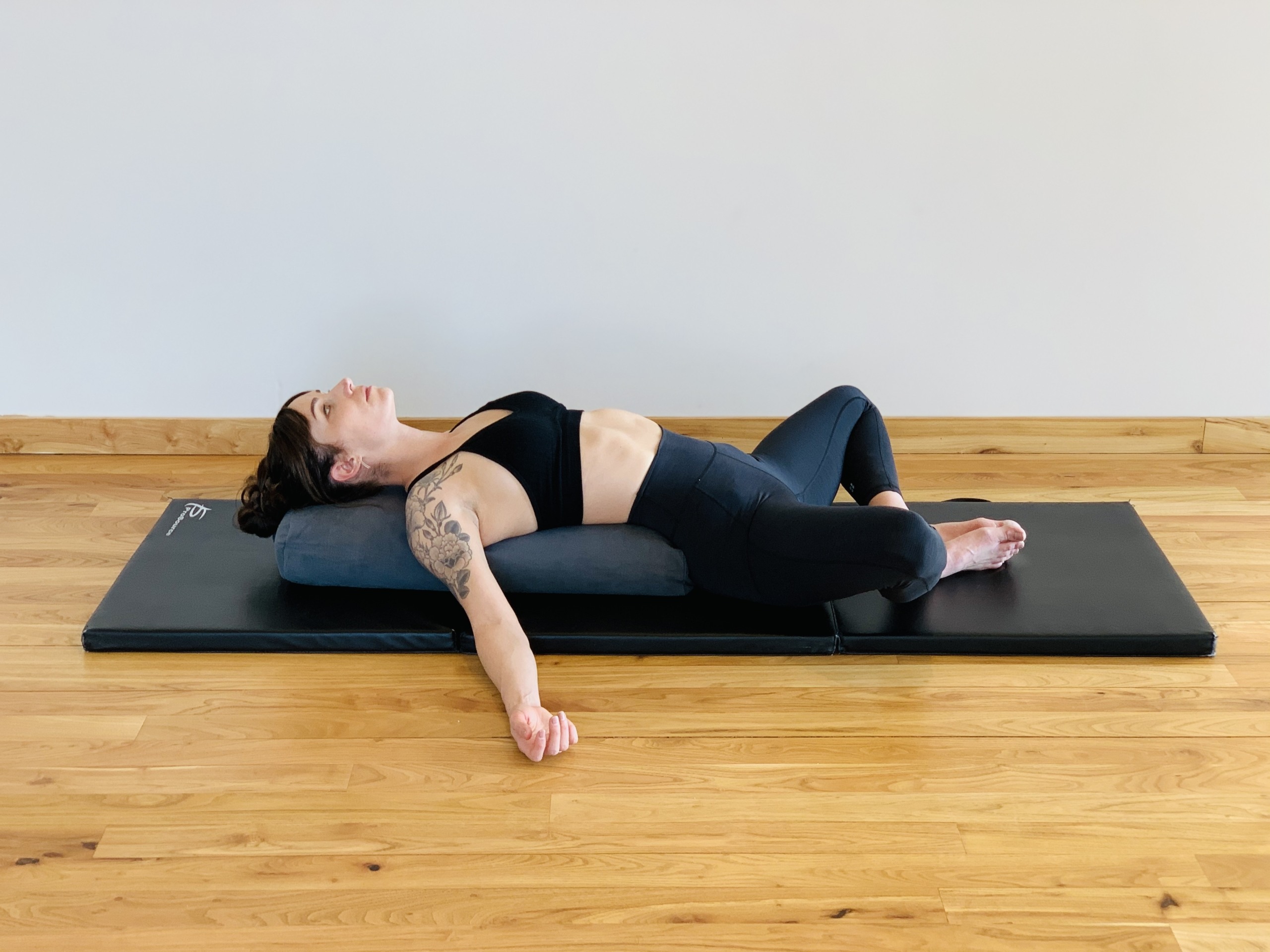
Unload and allow yourself to identify and work through small pains and locked tightness in your body with functional stretching—you may just unlock a fuller life in the process. Pushing your body can prove what you’re capable of and benefit your quality of life and longevity. A limber, lively body is a body that’s ready for a full range of life experiences.

Leave a Reply
Want to join the discussion?Feel free to contribute!